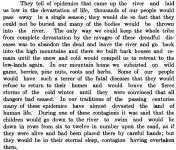Retiredlawyer
Jr. Member
- Mar 18, 2020
- 41
- 135
- Detector(s) used
- Do not use one currently
- Primary Interest:
- Relic Hunting
Found this metate. Broken but still very beautiful.
Attachments
Upvote
1
Follow along with the video below to see how to install our site as a web app on your home screen.
Note: This feature may not be available in some browsers.
Found this metate. Broken but still very beautiful.
Very cool! Possibly broken by the user. If someone left under circumstance they knew they may not return they broke stuff like this. No need for the competition to have a leg up with tools
Turning a utensil upside down could be simply to keep foxes and cats from marking it....or to keep it from freezing and breaking...
Is that something that has been theorized based on published excavation studies or your personal theory?
I’m not doubting either, just wondering. I always have my own theories...that there was more of a communal society rather than each man for himself. Personally, when I find a cooking grate at a remote camp hanging on a limb, I return it to the same limb when I’m done out of respect for the next guy. I agree tribe wars might result in every man for himself, but not all tribes were battling each other. I suspect more likely the same families visited a camp the same time each year.
Turning a utensil upside down could be simply to keep foxes and cats from marking it....or to keep it from freezing and breaking...
From what I have read concerning contact period customs...there was great respect for other people’s things. Everyone left their stuff in the open...the door open to their bark house. To enter another’s home and use or take their stuff would result in a deadly fight or cost you lots of money in the best case scenario...worst case, the gods would strike you down. Even looking into another’s home when they were not there might give you bad luck.
I would say most of it is based on personal theory and information gathered from many old timers that had gathered some of the most incredible collections you have ever seen. Of course if you want to dig deep enough it's all based on personal theories. I have meet many good archaeologists but 50/50 they are making up some sort of personal theory themselves. Tribes out west were not all that friendly and caring for one another. When the anasazi people moved in mass to the cliffs it wasn't to have a better view it was for protection from something very powerful and feared. Was that to avoid extreme drought, thievery amongst fellow people or new more violent tribes in the area? Maybe all of the above.... To me it wasn't always sunshine and rainbows. If someone was threatened and leaving quickly anything of value was most likely de-valued before departure. I have found a lot of broken artifacts especially pottery and metates that wouldn't necessarily be broken they way they are by nature. again different areas different tribal traits. Interesting topic and looking forward to further discussion.
I wonder if things were not possibly broken by marauders as well.
Definitely a possibility. People in the west who homesteaded and fought against the remaining native holdouts had a negative view of them for sure. I have always wondered if any of those early settlers collected any native items or did they also break things in an attempt to weaken the last few factions that may remain in the area?
I flip a lot of rocks when hunting artifacts. You never know when a metate will show up. It does take a lot of looking you might flip 100 Rocks before you find one that has been used.
I wonder if things were not possibly broken by marauders as well.
Definitely a possibility. People in the west who homesteaded and fought against the remaining native holdouts had a negative view of them for sure. I have always wondered if any of those early settlers collected any native items or did they also break things in an attempt to weaken the last few factions that may remain in the area?
I flip a lot of rocks when hunting artifacts. You never know when a metate will show up. It does take a lot of looking you might flip 100 Rocks before you find one that has been used.
I flip a ton of rocks too! That’s how I found my dinosaur footprints- all of them were on the bottom side of the rocks.
I flip a ton of rocks too! That’s how I found my dinosaur footprints- all of them were on the bottom side of the rocks.
Were the footprint “fossils” found near artifacts?
All in an area about 40 acres. They were washed out of a deep ravine.
Very interesting! I imagine if they saw footprints like these it would easily become a legend. Separated by 400 yards and 300 million years.
